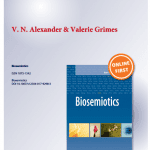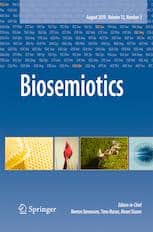How Hypnosis Occurs in the Brain
A Groundbreaking Theory
describes How Hypnosis Occurs in the Brain
Biosemiotician VN Alexander and our very own Valerie Grimes co-authored a paper that is now published online by Springer and will be in an upcoming print edition of BIOSEMIOTICS.
Fluid Biosemiotic Mechanisms Underlie Subconscious Habits
by V. N. Alexander & Valerie Grimes
Received: 13 February 2017 /Accepted: 5 July 2017
# Springer Science+Business Media B.V. 2017

Abstract
Although research into the biosemiotic mechanisms underlying the purposeful behavior of brainless living systems is extensive, researchers have not adequately described biosemiosis among neurons. As the conscious use of signs is well-covered by the various fields of semiotics, we focus on subconscious sign action. Subconscious semiotic habits, both functional and dysfunctional, may be created and reinforced in the brain not necessarily in a logical manner and not necessarily through repeated reinforcement. We review literature that suggests hypnosis may be effective in changing subconscious dysfunctional habits, and we offer a biosemiotic framework for understanding these results. If it has been difficult to evaluate any psychological approach, including hypnosis, this may be because contemporary neuroscience lacks a theory of the sign. We argue that understanding the fluid nature of representation in biological organisms is prerequisite to understanding the nature of the subconscious and may lead to more effective of treatments for dysfunctional habits developed through personal experience or culture.

I’m beyond thrilled to have been asked to contribute to this ground-breaking idea, for years and years, heck for 150+ years hypnotists have been trying to answer the question: How Does Hypnosis Work? And now we can have that discussion. And it’s all about the flow.
Valerie Grimes, Director/Founder of The Flow Center


